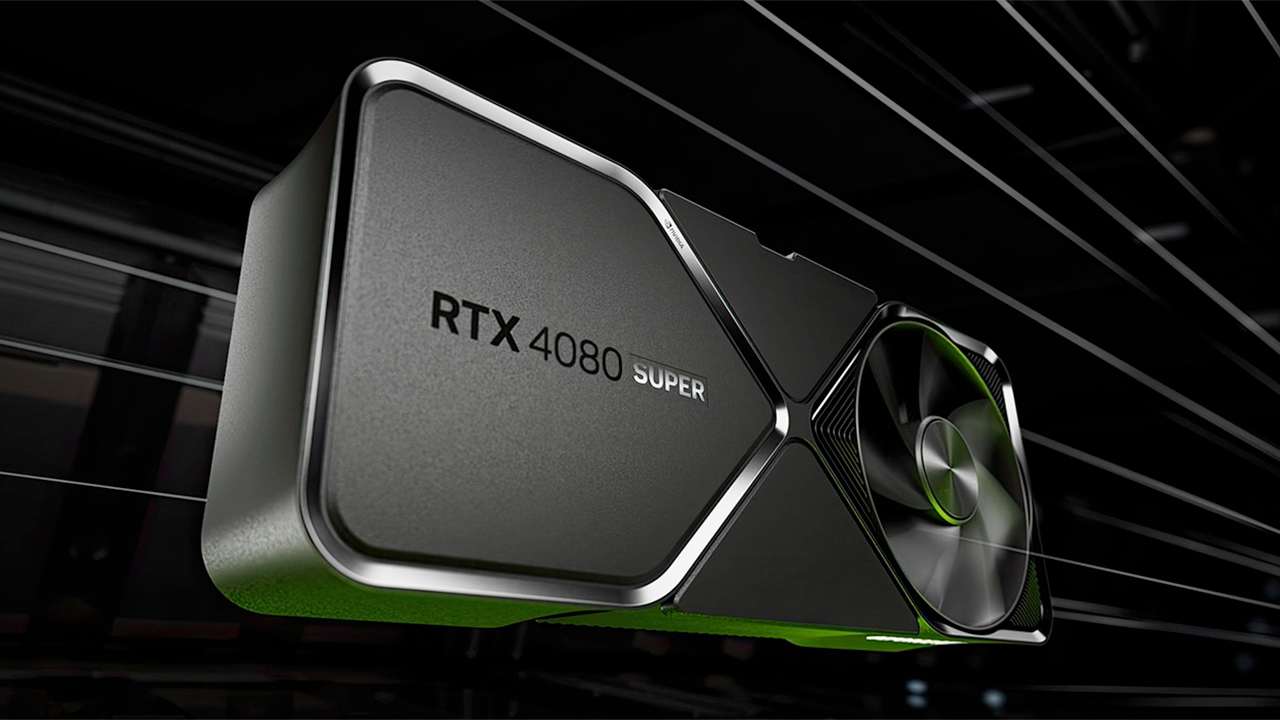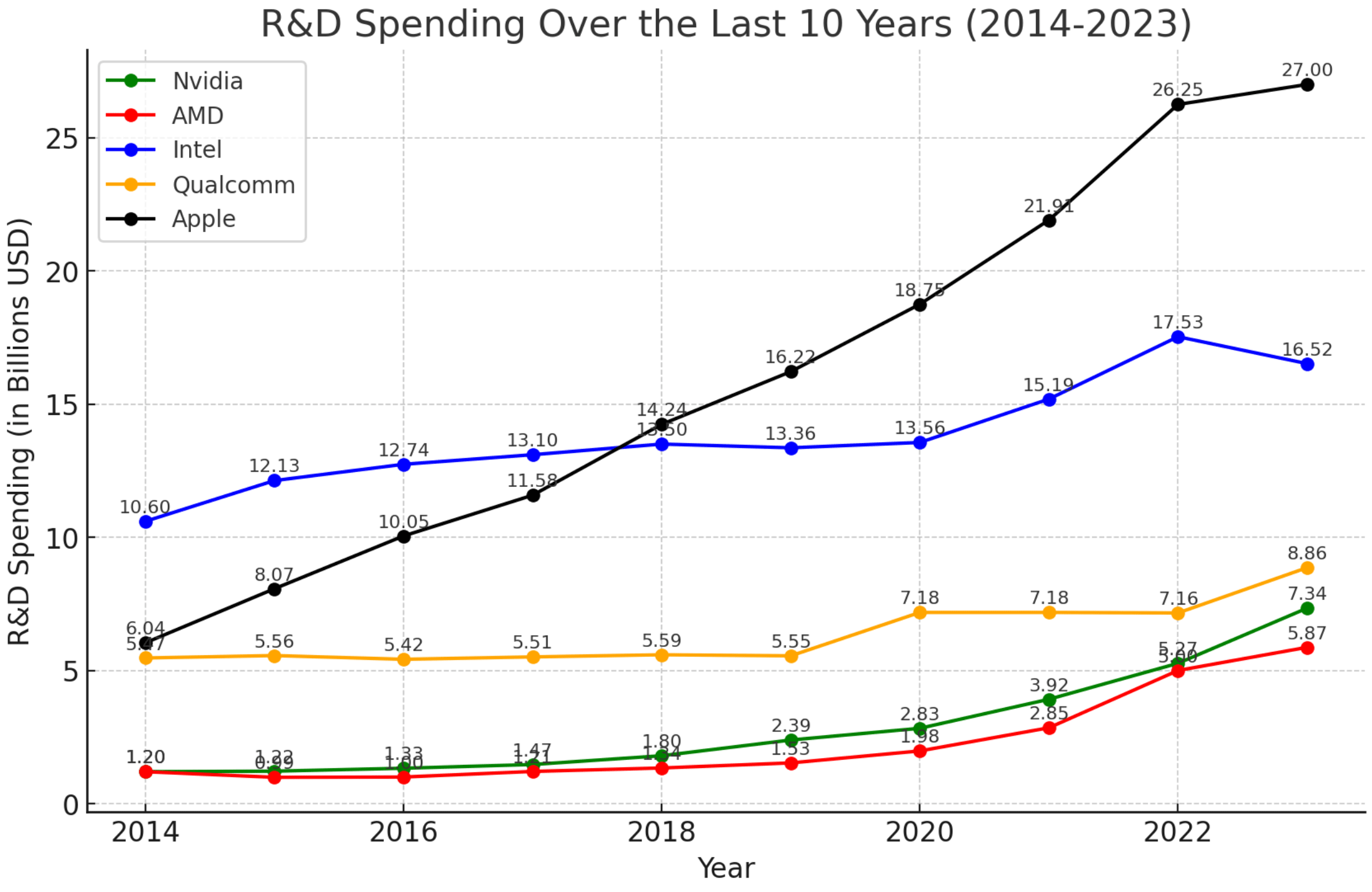
AMD and Nvidia's R&D budgets were quite similar ten years ago, but in recent years, Nvidia has been leaving its GPU rival behind in investment in this critical activity. According to the latest figures, Nvidia's spending on new technologies is about two times higher than that of AMD, according to Tech Fund. But while Nvidia's R&D spending easily eclipses AMD's, it is still way behind Intel and Qualcomm, and they all pale behind Apple's R&D expenditure.
Regarding R&D spending, Nvidia invests in data center GPUs for AI and HPC (now its bread-and-butter business), client PC GPUs, networking gear, and DPUs that are used to support its data center products. Given how fast Nvidia's H100/H200 and B100/B200 datacenter GPUs are selling, the company can afford to fire up its research and development department on all cylinders to develop new GPUs.
Also, now that the company has set the stage with a yearly cadence of AI product releases, it is reasonable to expect it to increase its R&D spending. Indeed, it skyrocketed this year: as of July 28, Nvidia spent $3.090 billion on R&D this fiscal year, up a billion from last year.
As for AMD, it develops client and data center CPUs, client and data center GPUs, FPGAs, Pensando DPUs, and networking gear, which means the company can spend less than Nvidia on its product categories. Remember that AMD invests significantly in fundamental R&D technologies, such as high-bandwidth memory (HBM). As of June 29, AMD spent $1.583 billion on research and development this fiscal year. Yet, AMD is committed to releasing new AI GPUs every year.

While nowadays we tend to compare AMD to Nvidia and Nvidia to Intel, back in the day, we used to compare Intel to AMD, as these are the leading producers of processors based on the x86 instruction set architecture (ISA). Intel spends tremendous money on R&D: it spent over $16.5 billion in 2023, more than AMD and Nvidia combined.
Yet Intel spends on CPUs, GPUs, FPGAs, networking gear, quantum computing, and many other products. Even though the current chief executive, Pat Gelsinger, has reduced the number of product categories and projects that Intel is pursuing, Intel still manages dozens of product categories and thousands of SKUs.
But more importantly, Intel spends billions on new semiconductor production process technologies. Every new manufacturing process typically requires billions in upfront research and development investments. Intel also develops packaging technologies, which require a lot of R&D money.
Qualcomm is, of course, another high spender on R&D. The company invests in system-on-chips for client devices like smartphones and PCs, RF technologies, and fundamental research for next-generation radio technologies (6G, 7G, etc.). Perhaps the most interesting part about Qualcomm is that among all the high-tech companies mentioned in this news story; it is the only one with a working 5G modem.
And yet, the biggest R&D spender is Apple. Apple is not precisely a semiconductor company, and it has to invest in various projects, from Ion-X glass for the entry-level Apple Watch to premium M-series Max and Ultra processors for high-performance MacBook Pro laptops and Mac Studio desktops. Depending on how you count (based on the company's filings with the SEC following its fiscal year or based on approximated calendar spending), Apple spent around $27 billion or $29.915 billion on R&D in 2023, which is more than AMD, Nvidia, and Qualcomm combined.







